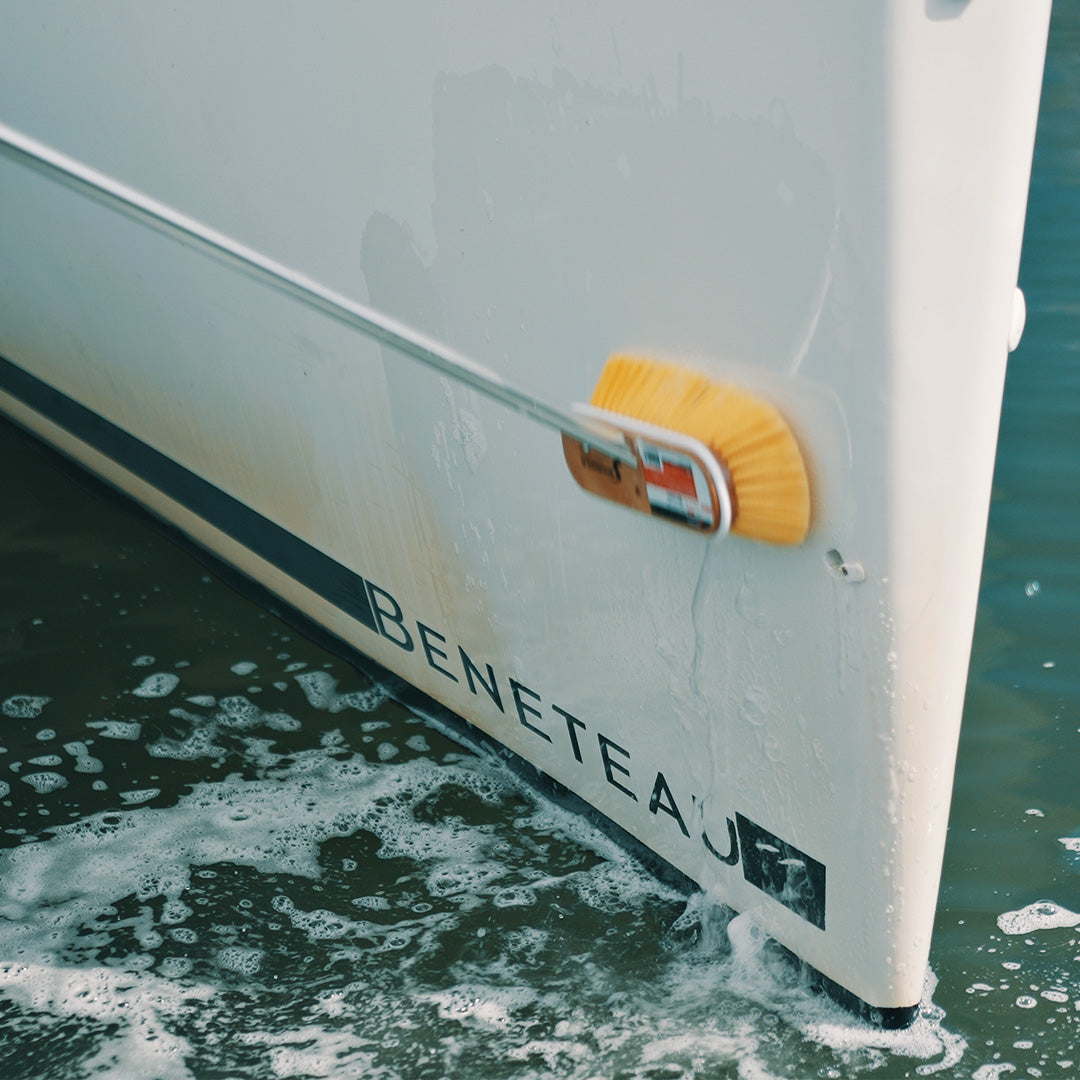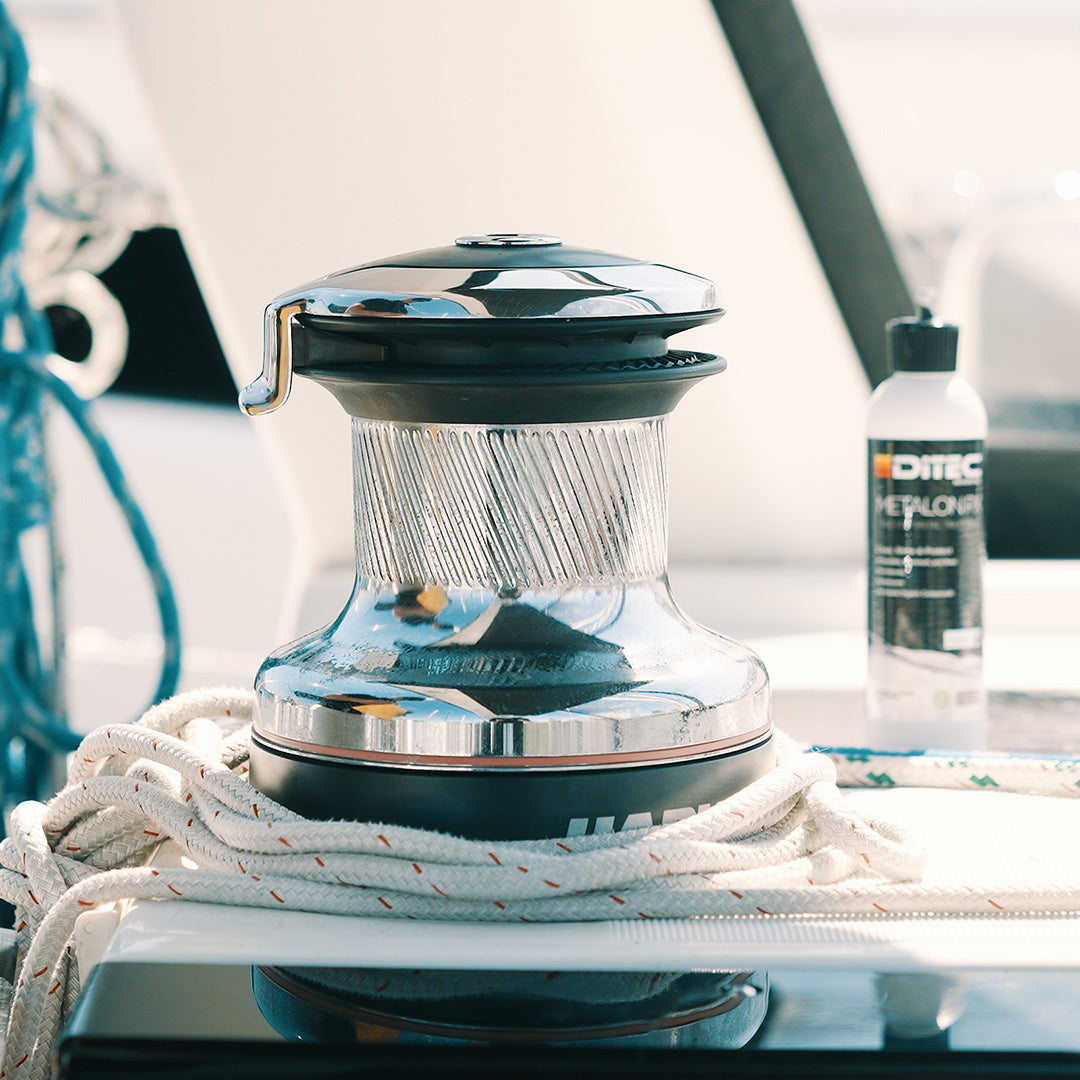Every day, we use a variety of chemicals in our homes without giving much thought to their potential dangers. These chemicals are also found in many popular marine cleaning products and can pose significant risks to our health and the marine environment. Understanding the harmful effects of these substances is crucial for making safer choices. Here’s a closer look at why certain common chemicals—acids, bleach, glycol ether, alkylphenol ethoxylates, phosphates, nitrates, ammonia, kerosene, thickeners, dyes, and optical brighteners—are harmful to you and the planet.
1. Acids
Health Risks: Acids, such as hydrochloric acid and sulfuric acid, are found in toilet bowl cleaners, descalers, and rust removers. They are highly corrosive and can cause severe burns upon skin contact. Inhalation of acidic fumes can irritate the respiratory tract, leading to coughing, shortness of breath, and potential long-term lung damage.
Environmental Impact: When acids, like hydrochloric acid and acid colorants found in Snappy Teak, are washed down the drain or into the waterways, they can lower the pH of water bodies, harming aquatic life and disrupting ecosystems. Acid spills can also damage soil quality, affecting plant life.
2. Bleach
Health Risks: Bleach (sodium hypochlorite) is used in household disinfectants, laundry whiteners, and mold removers. It is a strong irritant that can cause respiratory issues, skin irritation, and eye damage. Mixing bleach with other household cleaners, such as ammonia or acids, can release toxic chlorine gas, which poses a serious inhalation hazard.
Environmental Impact: Bleach can contribute to the formation of toxic byproducts, such as dioxins, which persist in the environment and accumulate in the food chain, posing long-term ecological and health risks.
3. Alkylphenol Ethoxylates (APEs)
Health Risks: APEs, such as nonylphenol ethoxylates, are present in detergents, disinfectants, and all-purpose cleaners. They are endocrine disruptors that interfere with hormone function in humans and animals, potentially leading to reproductive and developmental issues.
Environmental Impact: APEs are persistent in the environment, breaking down into more toxic compounds that accumulate in the food chain, affecting wildlife and ecosystems.
4. Phosphates
Health Risks: Phosphates are used in dishwashing detergents, laundry detergents, and fertilizers. While generally less toxic to humans, they can cause skin irritation and contribute to kidney damage with prolonged exposure.
Environmental Impact: Phosphates promote eutrophication in water bodies, leading to excessive algae growth. This depletes oxygen levels in the water, resulting in dead zones where aquatic life cannot survive.
5. Nitrates
Health Risks: Nitrates are found in fertilizers, food preservatives, and explosives. Ingesting high levels of nitrates can cause methemoglobinemia or "blue baby syndrome" in infants, which impairs the blood’s ability to carry oxygen. Long-term exposure is linked to various cancers and thyroid issues.
Environmental Impact: Nitrates, like phosphates, contribute to water pollution and eutrophication, harming aquatic ecosystems and contaminating drinking water supplies.
6. Ammonia
Health Risks: Ammonia is used in glass cleaners, floor cleaners, and fertilizers. It is a potent irritant that can cause burns to the skin, eyes, and respiratory tract. Inhalation of ammonia fumes can lead to coughing, wheezing, and severe respiratory distress.
Environmental Impact: Ammonia is toxic to aquatic organisms and contributes to nutrient pollution in water bodies, leading to environmental imbalances.
7. Thickeners
Health Risks: Thickeners are used in personal care products, cleaning agents, and food products. Some synthetic thickeners can cause skin irritation and allergic reactions.
Environmental Impact: Certain thickeners, like carbomers, break down into microplastics, which accumulate in water bodies and affect aquatic life, contributing to plastic pollution.
8. Dyes
Health Risks: Synthetic dyes in laundry detergents, cleaning products, and personal care items can cause skin irritation and allergic reactions. Some dyes are derived from petroleum and may contain harmful contaminants like heavy metals.
Environmental Impact: These dyes can persist in the environment, contaminating water bodies and posing risks to aquatic organisms. They also contribute to the overall pollution load in ecosystems.
9. Optical Brighteners
Health Risks: Optical brighteners are added to laundry detergents and paper products to make them appear whiter and brighter. They can cause skin irritation and allergic reactions in some individuals.
Environmental Impact: Optical brighteners are not readily biodegradable and can accumulate in water bodies, where they may affect aquatic life by interfering with normal biological processes and contributing to the chemical burden in ecosystems.
10. Sodium Hydroxide
Health Risks: Sodium hydroxide is used in soaps and dyes and is one of the top ingredients in Snappy Teak. It is highly corrosive and can cause severe burns to the skin and eyes upon contact. Inhaling its dust or mist can lead to respiratory issues, including severe irritation of the nasal passages and lungs.
Environmental Impact: If released into water bodies, sodium hydroxide can disrupt ecosystems, drastically altering pH levels and harming aquatic life and plants. Its high reactivity also means it can contribute to soil degradation and negatively impact biodiversity. Safe handling and disposal practices are crucial to mitigate these hazards.
Understanding the hidden dangers of these common chemicals can help us make more informed choices about the products we use. DiTEC’s marine cleaning products do not use any of these chemicals or additives. DiTEC continues to lead the marine industry in developing safe and effective cleaning and protection products and is one of the only manufacturers whose products meet or exceed the world’s strictest green and eco-friendly environmental regulations set by MARPOL Annex III and Annex V. Opting for safer, environmentally friendly alternatives, like DiTEC’s marine cleaning products, can protect our health and preserve the planet for future generations. Always read labels, follow safety guidelines, and consider switching to natural or less harmful products to minimize these risks.







